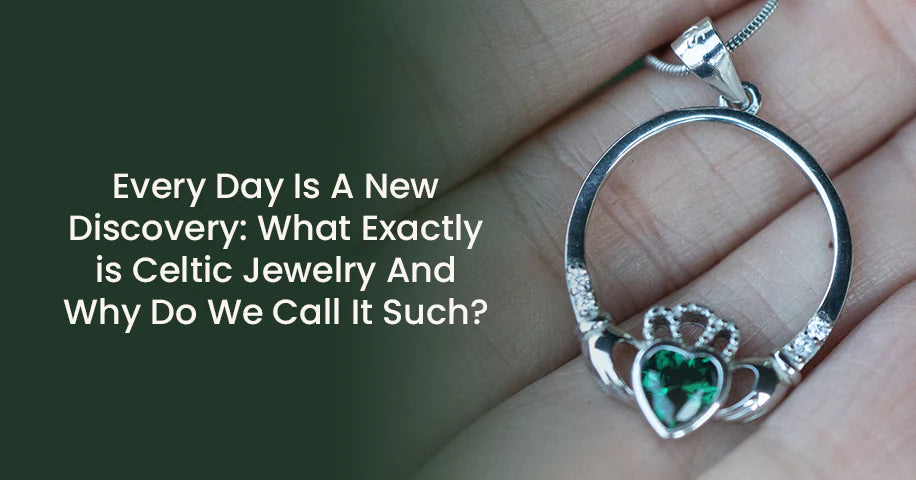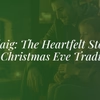Every Day Is A New Discovery: What Exactly is Celtic Jewellery Why Do We Call It Such?

Have you ever wondered why we call it "Celtic Jewellery? Is it because we craft this jewellery in Ireland? Or did the Celtics and Irish use the term to imprint their ideals and values with their heritage through designs? Or was it just an accident we later accepted and believed to be true? All these unanswered questions will be given the proper explanation TODAY.
If you ask any random person what Celtic Jewellery is, what design is their favorite, or what jewellery design they are familiar with. The most concrete and popular answer would be Claddagh. People quickly assume it is a staple in Irish and Celtic jewellery; however, do they even know its history? It is a fact that Claddagh is just one of the intricate and beautiful designs. Celtic jewellery has to offer, but its rich history is also fascinating.
It's essential to know what is considered a "Celtic" design to understand Celtic jewellery. On the other hand, it's also possible that the typical individual knows the common Irish jewellery symbols simply by sight, without learning their names or the essential details about each piece's designs.
"Celtic" describes the Iron Age during the European civilization, which began about 1000 B.C. and lasted until the fall of the Roman Empire. Although the main styles of Celtic art we see in this period date to the La Tène period (circa 5th to 1st centuries B.C.), after the premises in Switzerland where vast numbers of artifacts were found after a lake's ocean level dropped in 1857. The La Tène period is also used to identify all Celtic art created during that time. Scholars believe that La Tène civilization had reached as far as the British Isles.
In this era, complex patterns and geometric motifs were often seen in jewellery and metalwork, typically in gold, silver, and copper. It was in the triskele that the tripartite spiral often occurred, which suggests mobility. However, La Tène art and accessories seldom appeared, and virtually never did the silhouettes.


The Claddagh ring, the most well-known iconic Irish jewellery today, has much more recent roots than the other Celtic jewellery it is compared to. The fede crew gets its name from the Italian mani in fede, meaning "faithful hands." This ring design incorporates clasped hands, dating back to Roman times. The Claddagh ring, in particular, adds a heart and a crown to the joined hands design, thus representing love and fidelity.
Another widespread misunderstanding about the ring's origins is that, in the late 1600s, Irishman Richard Joyce was kidnapped by Algerian smugglers. After being enslaved by the smugglers, Joyce became a master craftsman, from whom he learned the profession, and he missed his love back home. He constructed and designed a ring for her to demonstrate his feelings of love, friendship, and devotion.
By 1689, he had been freed from slavery and went home with his jewellery and ring on his finger. According to legend, he gave the jewellery to his long-lost love, who had watched for him for 14 years while he was held captive. Joyce earned great money and fame by becoming a goldsmith, and they were married.
Joyce's initials appear on the first Claddagh rings but are not the first ones Thomas Meade created. As a result, it needs to be clarified if the tradition of Joyce as the ring's inventor is accurate. Presently, Thomas Dillon Claddagh Gold, a manufacturer of the Claddagh ring, is now the longest-operating company of its kind, having first opened its doors in 1750. As the only companies authorized to use the label "ORIGINAL" in every one of their rings, these are the only ones with the exclusive right to issue the title.
Even how a Claddagh ring is being placed has meaning. You are available for love if you have your heart towards your fingers. Wearing the ring on the right index finger with the crown facing outward indicates that the person is in a serious relationship, although they may not be entirely devoted. The wearer will bring the ring to their left index finger, turn it so that the heart is pointing outward, and then wear it.
Wearing the ring after marriage causes the crown to face out. Many Irish couples wear Claddagh rings to signify various commitments and promises, but Claddagh rings are typically passed on from one generation from mother to daughter.

In conclusion, the reason why the term Celtic Jewellery is coined as it is. The main factor would rely on the history, mythology, and ancestry behind it. There are several stories and varieties of where these pieces have originated and how they have come to be. Then again, it is up to us to fully understand and grasp the concept by learning more about it.
Several designs have stories behind them; we have the Celtic Knot, Celtic Cross, Triquetra, and so much more just waiting for us to uncover.
Wear, own, and treat yourself to Celtic and Irish jewellery at Celtic Knot Jewellery. Visit our shop today!
Feel free to share your stories and suggestions in the comment section below, and we would love to hear from you.





